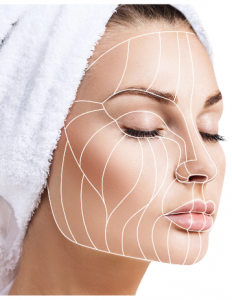Every year, millions of people opt for cosmetic procedures like the facelift to help them maintain their youthful appearances. Anyone tired of using different products, diets, supplements, and strategies to keep the effects of time from leaving their mark on their faces may be surprised to learn that a facelift could be the answer to their anti-aging prayers.
Though most patients have similar concerns about their faces that they want to correct, such as wrinkles, sunken and hollow eyes, and droopy and sagging skin, there are different facelift techniques to consider that address these issues differently.
Are Facelifts Permanent?

Factors That Affect How Long a Facelift Lasts
Despite its popularity, the procedure is not permanent. Various things can impact the longevity of facelift results. Below are the most critical factors that determine how long a facelift can last.
Facial anatomy is one of the most critical factors determining facelift outcome and longevity. Everyone’s facial anatomy is unique. Though there are various ways to perform a facelift, the most dramatic and desirable improvements are those that complement the patient’s facial structure and skin profile.
Skin health changes with age. Aging causes a natural decline in skin function, health, and thickness. The most notable signs of aging on the face include wrinkles, dark, hollow circles, and slimmer and drooping features. It should come as no surprise that patient skin health can make facelift results degrade faster than normal or expected.
Lifestyle plays a prominent role in skin health and function. Individuals who maintain a good diet, physical activity levels, and skincare routine enjoy longer-lasting facelift results than those who don’t.
Genetics is something to consider when determining how long your facelift will last. Patients with certain ethnic or genetic features like darker complexions tend to notice longer-lasting results than those with fairer skin tones. Lighter skin complexions have less pigmentation and are more susceptible to skin damage from the sun’s UV rays and environmental elements.
Patient age is important when considering the impact of any cosmetic procedure, including a facelift. Though most facelift patients are over 50, the procedure is quite popular among adults in their mid-30s and 40s. It’s very common for younger patients to end up with more dramatic and longer-lasting results. Of course, this is contingent on many things, including skin and overall physical health, lifestyle, genetics, the amount of work performed during the facelift, etc.
Facelift Techniques
Dr. Matt Hershcovitch, M.D., performs different types of facelifts to help patients meet their cosmetic and appearance goals. Each method differs in invasiveness and technique.
SMAS techniques are used to correct aging issues on the face by manipulating the connective and muscular layers of the face to restore fullness while naturally lifting the features. SMAS facelift patients look younger without the taunt or overlytightened effect associated with more conventional methods.
Deep plane techniques are used to correct aging signs associated with a natural decline in facial muscle tone. The procedure involves revising the connections of the deep tissues and muscles of the face underneath the SMAS layer to lift the facial features with less tension.
Patients interested in longer-lasting results should consider invasive options, like a full facelift or deep plane and SMAS facelift. Because these procedures involve surgically altering the deeper layers of the face, they often last upwards of 10 to 15 years. Many patients enjoy their results much longer.
Mini facelifts are designed for patients who want to rejuvenate their faces to correct minor issues. Although the procedure is not as invasive as alternative procedures, results have limited longevity.
Many patients end up having subsequent facelift procedures and alternative cosmetic treatments within a few years and throughout their lives to maintain their desired look.
Liquid facelifts are another option that temporarily erases the effects of time on the face like sagging cheeks, nasolabial lines, wrinkles, etc. Unlike the above methods, liquid facelifts involve the use of injectable dermal fillers that wear off over time and require maintenance treatments to preserve results.
Facelifts are often performed with additional cosmetic procedures to enhance patient appearance. Certain procedures, such as a brow lift, eyelid surgery, facelift revisions, and even non-surgical treatments like Botox injections and chemical peels, can help extend the outcome of a facelift, so results last longer than average or expected.
 How to Make Facelift Results Last
How to Make Facelift Results Last
Because aging is an unstoppable process, facelift patients should consider implementing positive strategies like the ones below to ensure their facelift lasts.
- Follow all post-operative recommendations from the surgeon. Deviations and noncompliance can cause complications or issues that tarnish and shorten the duration of facelift results.
- Use skincare products that are beneficial to healthy skin. Avoid products with toxic or harmful ingredients.
- Develop a consistent skincare routine. Skin care needs often change after cosmetic treatments. Consult with your surgeon for skin care products and routine recommendations.
- Limit sun exposure. Wear sunscreen and use protective clothing or accessories like sunglasses and hats to protect the sensitive skin on the face from the damaging effects of the sun.
- Avoid smoking, alcohol, and recreational substances. These items are associated with undesirable skin changes, such as lines, wrinkles, dryness, discoloration, poor circulation, and premature aging. They are also harmful to overall health.
Though facelifts are rejuvenating and transformational, a single procedure is not enough to combat the ongoing loss of skin and muscle elasticity that naturally occurs from aging. Facelift result longevity is influenced by procedure type, patient age and skin health, and ultimately, the surgeon’s skill and level of expertise. Individual results vary.
To learn more about what you can expect with a facelift, contact Dr. Hershcovitch, M.D., at (818) 206-2539.

 How to Make Facelift Results Last
How to Make Facelift Results Last